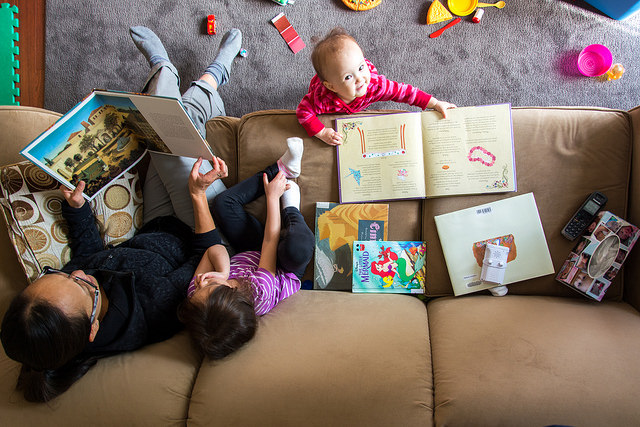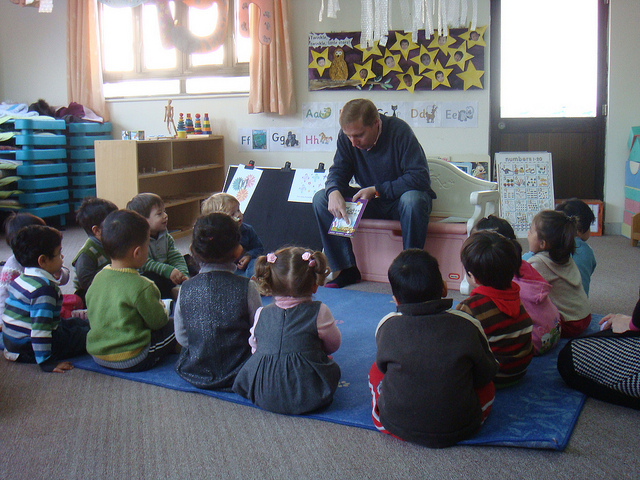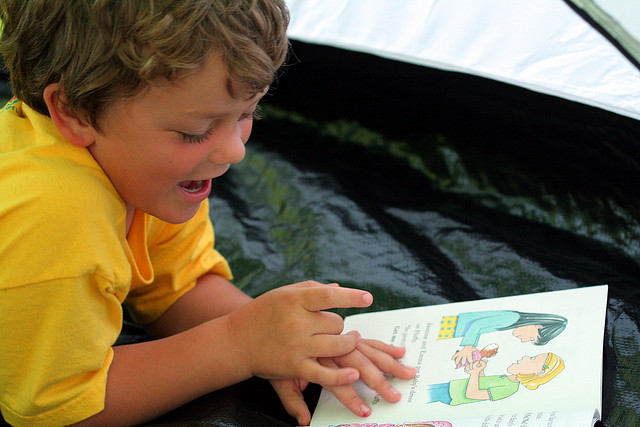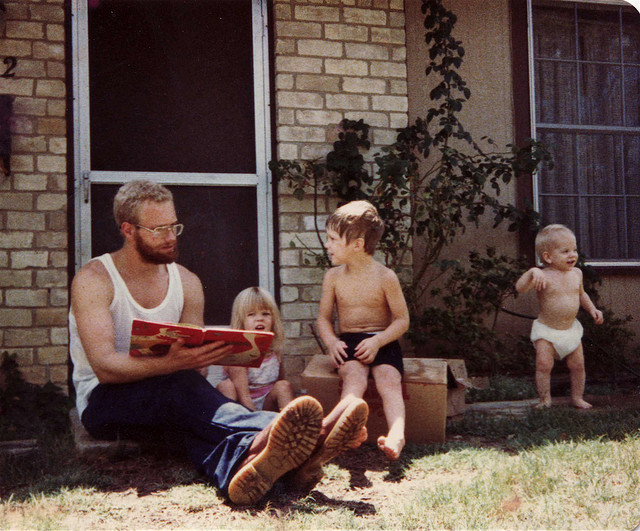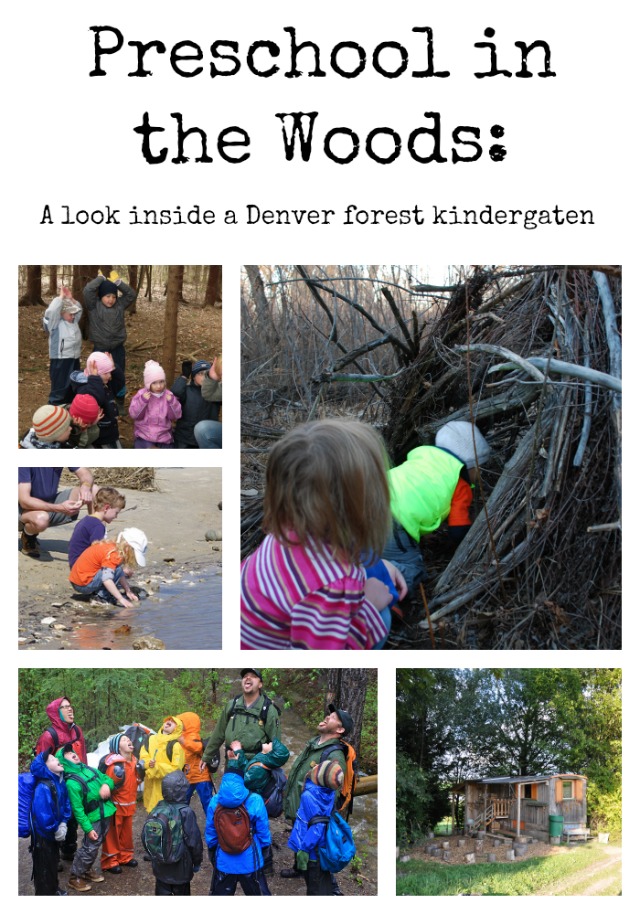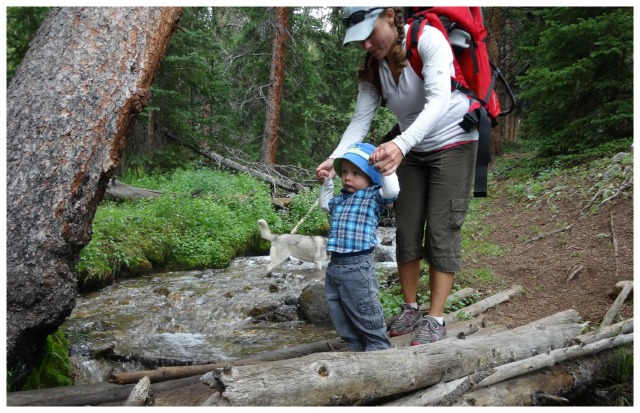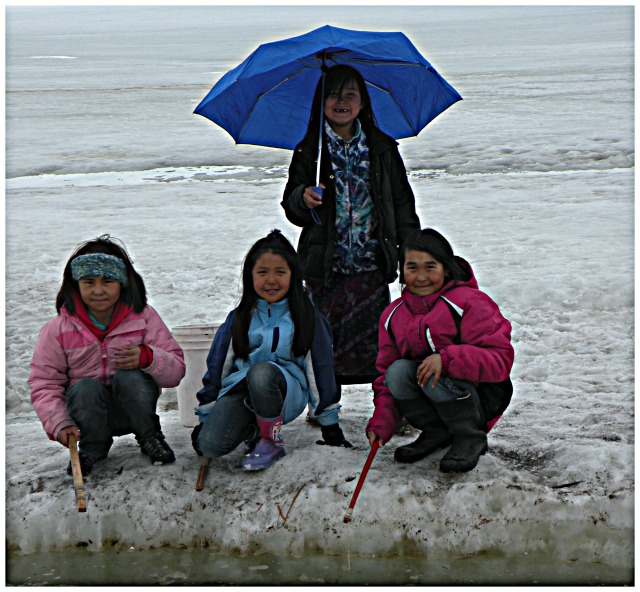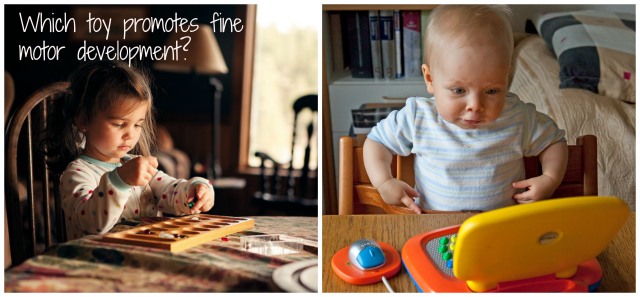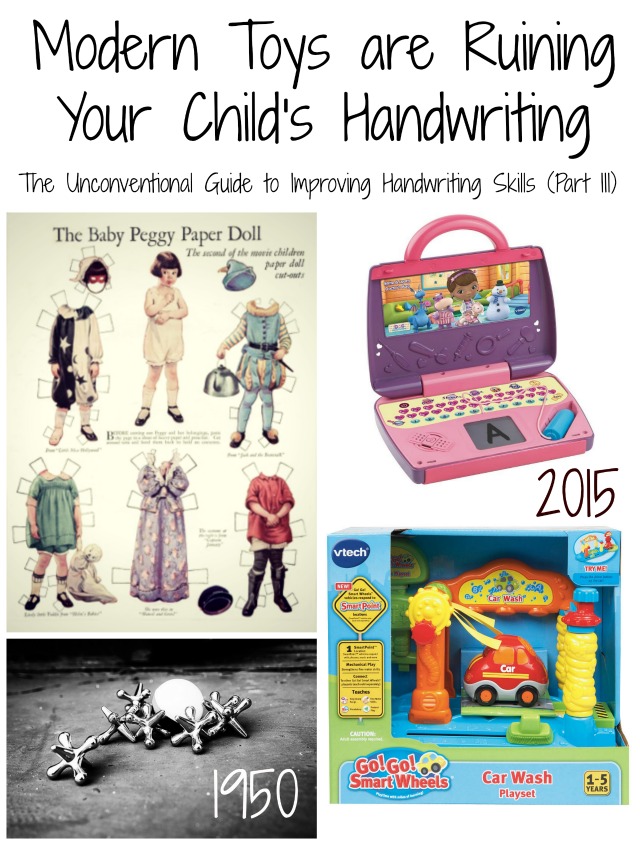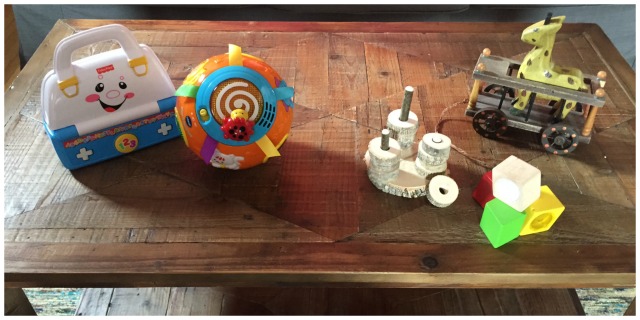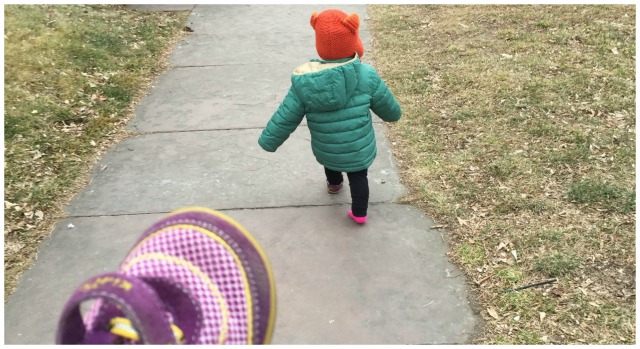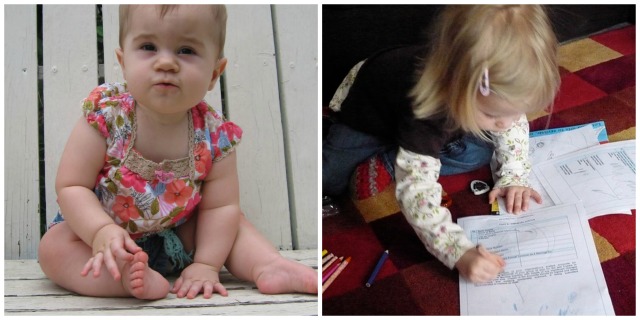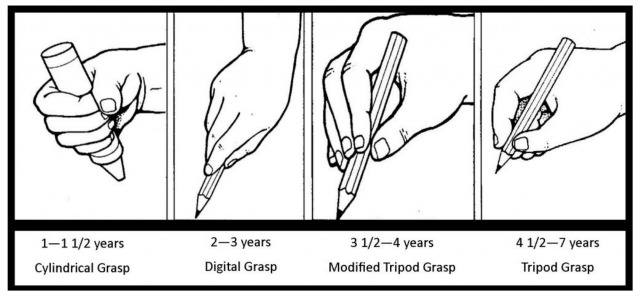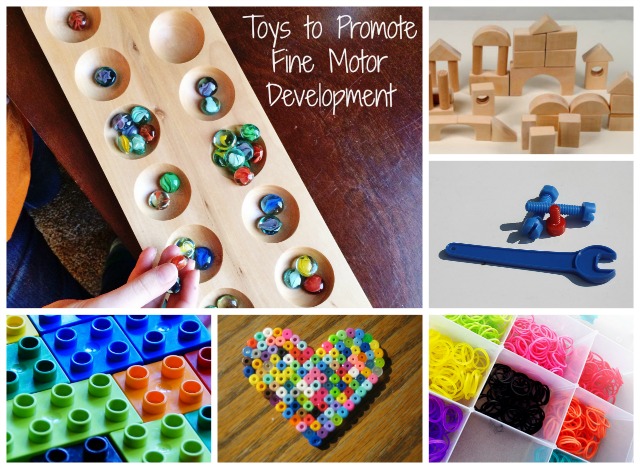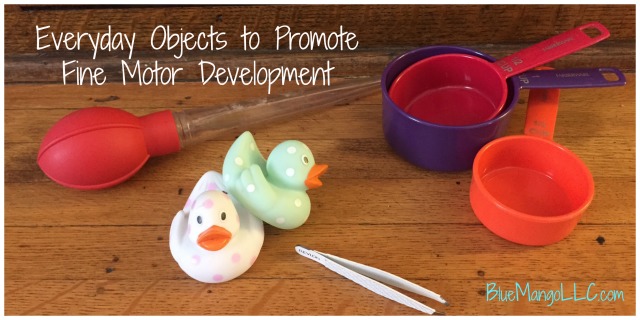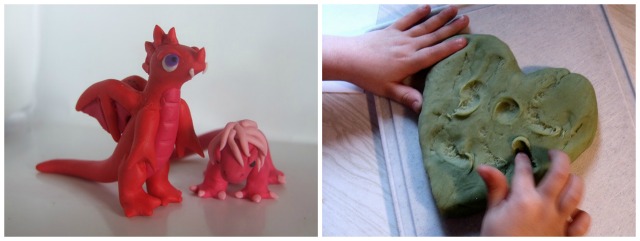“The single most important activity for building knowledge for their eventual success in reading is reading aloud to children.”
Becoming a Nation of Readers (1985)
A joint position paper from the National Association of the Education of Young Children (NAEYC) and the International Reading Association (IRA) agrees:
The single most important activity for building these understandings and skills essential for reading success appears to be reading aloud to children.
Since the early 1980’s through today, research has continued to show that if you want your child to become a successful reader and lifelong learner, the most important thing you can do is read to them aloud.
Why is reading aloud so important?
1. Fosters babies and toddlers early language skills
Reading books to even infants prime them to become successful readers themselves. It exposes them to the sounds and structure of their native language and helps them develop print awareness by starting to understand the concept of a word and text on a page has meaning.
2. Builds vocabulary
This is so important from babies to high schoolers! The size of a child’s vocabulary is a strong predictor of his or her success in school. Children who enter kindergarten with a large vocabulary are at a significant advantage.
Older children, teenagers and even adults continue to expand their knowledge and become more fluent, efficient readers as their vocabulary expands.
3. Helps kids gain knowledge about the world
Reading books aloud to children exposes them to novel words, ideas and information that they would not normally encounter in their everyday lives. The more background knowledge a child has, the better he is able to assimilate new information and understand increasingly complex concepts.
4. Develops a love of books and passion for reading
Reading aloud to your child emphasizes that reading is important and enjoyable.
Becoming a great reader comes with practice. A child who loves to read will continue to choose to listen to books and read them independently – further enhancing her reading skills, her knowledge about the world around her and expanding her vocabulary.
Don’t stop when your child has learned to read!
Reading aloud doesn’t just mean bedtime stories for your 3 year old. Whether you have a baby, preschooler, 1st grader or middle schooler – you should be reading to them aloud.
While a 4th grader may be reading at or above grade level, reading to him even more advanced texts allows him to deepens comprehension and understanding of plot, setting, characters, themes and story patterns that he would not get reading on his own – as well as expand his vocabulary.
How to do an amazing read aloud
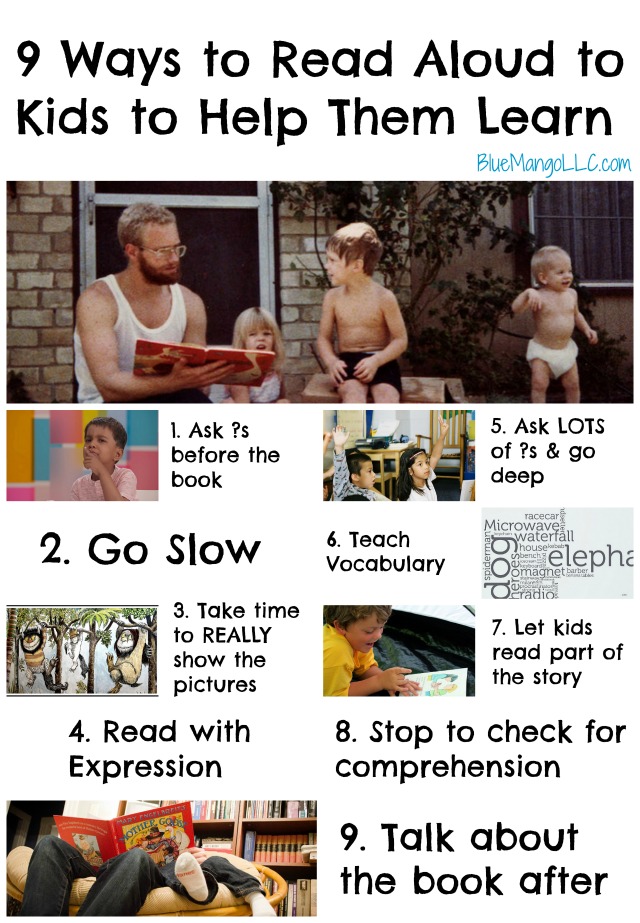
Here are 9 great ways to read aloud a book to children to really help them learn!
1. Ask questions before the book starts
Never start by opening the book right away. Read the title, point out the author and the illustrator, look at the front and back cover and ask the child to make a prediction.
Children often have a hard time making a prediction because they want to be “right” and don’t know what is going to happen in the story. To get around this road block I tend to ask questions like…
What could happen in this story?
Where does the story take place?
Who might the characters be? What might they do in the story?
In addition, always try to access prior knowledge before reading a story. If there is a dog on the front cover ask the child, “What do you know about dogs? What are they like? Do you know a dog? What kinds of this does she do?”
Helping children connect their own background knowledge and personal experience significantly aids in their comprehension of a story.
2. Go slow
One of the worst things you can do when reading aloud is rush through it. Listening to a story should be enjoyable and children need time to process what they are hearing.
They need to hear, comprehend and attempt to create a picture in their head. Kids need to take unfamiliar words and try to piece together their meaning though pictures and context clues. Then they need to figure out what is happening in the story and infer how characters are feeling. This is a big job!
Pause after paragraphs and pages to let kids digest information and ask clarifying questions if necessary.
3. Take time to really show the pictures
Along the same note, make sure you show the pictures long enough. A significant component of comprehension in the early grades is about reading the pictures.
Don’t move on to the next page until the child is ready. If she asks to see a previous page – let her – she is trying to piece together what happened before with what is happening now.
In addition, ask questions about the pictures just as you would the text. Get them to notice small details in the picture that add humor or a twist to the story. What do the expressions and body language of the characters say about what they are feeling? Do the characters’ words match how they are feeling?
The younger your audience the longer you want to focus on the illustrations. You should see how long it takes me to read a 100 word book to my toddler!
4. Read with expression
Just as adults can have difficulty inferring tone and meaning from an email or text message, reading without expression can leave a child confused as to what the words really mean.
Don’t be afraid to be an actor! Model reading with expression by making note of different types of punctuation, bolder phrases and bigger words – children’s book authors have a great way of creatively arranging words on a page.
Make the sounds that are written out in the book and even add some different voices to the characters.
While you are welcome to be over the top – kids love it! – I tend not to be as I have a quiet, calm personality. However, I can still inject the appropriate amount of expression in my voice and animation in my face to enhance my students’ understanding of the story.
4. Ask LOTS of questions and go deep
There are times when it’s nice just to hear a story all the way through with no interruptions – usually a favorite one you’ve read over and over again. However, my philosophy is that you can never ask too many questions when reading aloud.
If you want kids to get the most out of a story and really teach them something, they need to be forced to slow down and think critically. While you can always ask text-based questions which have a clear answer in the story – “What color was Roger’s shirt?” – the best kinds of questions encourage kids to go deeper.
Ask questions that force kids to make inferences, analyze a situation, use their background knowledge and question the status-quo.
Here are some great examples:
- How do you think the character might be feeling? Why? (always get an explanation)
- Was he expecting that to happen?
- How might you feel in that situation?
- What might happen next?
- Start some debates with no right or wrong answer – Do you think she should have done x?
- Have kids take the viewpoint of the bad guy – Why might he have chosen to tease Bobby?
6. Teach vocabulary
While children may do a really good job of understanding the gist of a story, you’d be surprised at how many of the words in the story kids actually don’t know.
Kids may hear a word often in casual conversation but sill not understand what this word means. Unless it’s a really strange word, kids will probably not ask you what it means.
Teaching vocabulary while reading a story can actually be quite simple. The easiest strategy is to follow with a synonym after reading the word.
“Casey was exuberant – she was so happy – when she won first prize!”
This allows you to keep reading the story without pausing. However, you can also ask questions to teach students how to figure out unfamiliar words by using context clues – a skill they will need when reading independently.
Ask students to examine the picture, listen to your tone and expression and think about what else is happening in the story to make a guess as to what the word means.
As I mentioned before the size of child’s vocabulary is a huge predictor for his or her success as a reader and learner – so don’t skip this step!
7. Let kids read part of the story
Always try to keep kids actively engaged in the story by having them participate. This is usually pretty easy with a familiar book as a child will automatically chime in when there is a part that he or she has memorized.
You can encourage this kind of involvement with new stories as well by having children fill in the blank during stories that repeat a phrase on every page or rhyme.
8. Stop to check for comprehension
Some kids naturally ask clarifying questions during a story, but this is really a skill that needs to be taught. Most kids just go into a trance when listening to a story.
Stop mid-way through a story (or every few pages) to make sure children are understanding what they are hearing and don’t have any questions or misconceptions. It’s better to tackle these gaps in understanding early so students don’t get completely lost by the end of a book.
Ask students to give you a summary of what happened so far, recall the different names and attributes of the characters, ask what the current problem in the story is and if it’s been solved yet.
Tell kids they should stop you and ask questions if they don’t understand what’s going on because reading has to make sense.
9. Talk about the book after
Always give a little time to reflect on the book after you’ve finished.
It could be as simple as asking students, “Did you like the story? What was your favorite part?” to more complex questions such as, “How did the character’s feelings change throughout the story? What’s another way the book could have ended?”
If you really wanted students to go deep with a book, read it again another day and ask them to think about it at an even higher level.
Make it enjoyable
During family vacations at the beach, we spent most of our time outdoors. However, on rainy days or in the evenings, we never really watched TV but all sat around the living room reading books. Just seeing my brother engrossed in a novel got me excited to read my own book.
I can’t wait when that day comes for my own little family now – partly because it’ll be nice not to chase around unreasonable little people negotiating why they need to brush their teeth – but also because I’m excited to see that passion for reading in my own children.
The next time your read aloud to your child or class, try to implement some of these strategies. A read aloud does not have to take 45 minutes so choose a few things to do each time to enhance your child’s experience with the book.
Let me hear from you!
Is there something you do that keeps your kids particularly engaged when reading a book?
What memories do you have from your childhood that made books magical for you?
